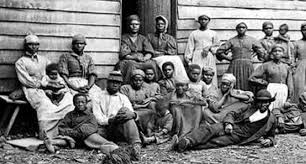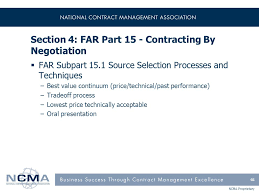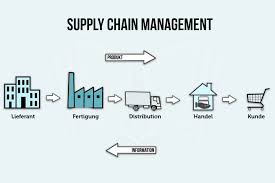
Myocardial Infarction
Myocardial Infarction
Order Instructions:
Hello writer sir, how are you today
Thank you so much for helping for this Question Answer assignment. Case scenario for the essay topic is as follow.
• APA Referencing
• At least 30 genuine references from 2010 to 2016 study based,
• 90 % references has to be research based Journal article AND books
• Australian and New Zealand based study articles are preferable.
• Please have a look Rubric guideline for given topic, I need good grades in this assignment so please do me a favour and try to give me a best quality work
Word count: 1600 words (every question has a specific word count, which must be adhered to)
Instructions:
• The assignment is to be presented in a question/answer format NOT as an essay (i.e. no introduction or conclusion).
• Each answer has a word limit (1600 in total); each answer must be supported with citations.
• A reference list must be provided at the end of the assignment.
• Please refer to the marking guide available in the unit outline for further information.
** The following questions must be answered for your chosen case study **
The following questions relates to the patient within the first 24 hours since admission to the emergency department (ED):
1. Outline the causes, incidence and risk factors of the identified condition and how it can impact on the patient and family (400 words)
2. List five (5) common signs and symptoms of the identified condition; for each provide a link to the underlying pathophysiology (350 words)
a. This can be done in the form of a table – each point needs to be appropriately referenced
3. Describe two (2) common classes of drugs used for patients with the identified condition including physiological effect of each class on the body (350 words)
a. This does not mean specific drugs but rather the class that these drugs belong to.
4. Identify and explain, in order of priority the nursing care strategies you, as the registered nurse, should use within the first 24 hours post admission for this patient (500 words).
Case Study 1: Myocardial infarction with history of stable angina and mitral valve stenosis
Mr Tupa Savea is a 54 year old male who has been transferred to the coronary care unit (CCU) from the emergency department for management of episodic chest pain. He has a history of stable angina and mitral valve stenosis.
Mr Savea is of Samoan background and has lived in regional Queensland for the last 20 years with his wife and children. He was brought in by ambulance having had chest pain and shortness of breath. He reports having similar symptoms on and off for the past two months but did not visit his GP as he assumed the discomfort was due to indigestion. Mr Savea is an ex-smoker, tobacco free for the last six months and a social drinker (approx. 10 units/week). He works full-time as an orderly at a local hospital and is active in the Samoan support community.
On assessment Mr Savea’s vital signs are: PR 90 bpm and irregular; RR 12 bpm; BP 150/100mmHg; Temp 36.9°C; SpO2 98% on oxygen 8L/min via Hudson mask. He has a body mass index (BMI) of 35 kg/m2 indicating clinical obesity. Blood test results show elevated cardiac enzymes and troponin levels and cholesterol level of 8.9mmol/L. His ECG indicates that he has a ST segment elevated myocardial infarction. Mr Savea was administered sublingual glyceryl trinitrate followed by morphine 2.5 mg IV for pain in the emergency department. He reports being pain free on admission to CCU.
Explainations regarding question and answer
In regards to Q.2. you must link the signs and symptoms to the Pathophysiology.
• This means you need to research how it links to the symptom e.g. Chest pain.
• Why does that patient experience this?
• What is going on in the heart for them to experience this and must be supported by EBP literature.
In regards to Q 3
”Describe two (2) common classes of drugs used for patients with the identified condition ” therefore any two classes of drugs not necessarily the ones mentioned in case study, you can use any 2 classes of drugs related to patient’s conditions
Question 3 refers to your patients condition and why certain drug classes are used in the treatment and what physiological effects the drug class have on the patient’s condition which includes there mode of action.
In regards to Q 4
Identify and explain, in order of priority the nursing care strategies you, as the registered nurse, should use within the first 24 hours post admission for this patient”. Therefore it has not stated ED so it means in CCU the first 24 hours of admission to the hospital.
SAMPLE ANSWER
Question 1
Myocardial infarction refers to a condition that develops as a result of the irreversible necrosis of cardiac muscles due to prolonged lack of supply of oxygen (ischemia) (Caforio et al., 2013). Cardiac muscles require sufficient supply of blood rich in oxygen for nourishment and it is the role of coronary arteries to supply the blood. It is estimated that approximately 10 million patients suffer from myocardial infarction across the globe. In Australia, it is estimated that approximately 350, 000 individuals have had this condition at some time in their life. In 2013, the condition claimed about 8, 611 lives in Australia, an average of 24 individuals daily (Chew et al., 2013; Etaher et al., 2015).
Causes of Myocardial Infarction
Research by Reiter et al., (2012) indicates that coronary heart disease is one of the most common causes of myocardial infarction. This is a condition where by the coronary arteries harden and narrow due to the buildup of atheromas or fatty plaques in the walls of the arteries a condition referred to as atherosclerosis (Chaitman, 2012; Werdan et al., 2012). The atheromas consist of platelets, cholesterol, and clots. Over time, resistance of blood occurs in the vessels reducing blood flow or in severe cases causes when a blood clot forms complete obstruction occurs. Sudden severe spasm or tightening of coronary arteries can also cause myocardial infarction. This condition occurs regardless of whether the coronary artery disease is present or not. Some of the documented causes of coronary spasms include cigarette smoking, emotional stress, and exposure to extreme cold.
Risk Factors of Myocardial Infarction
The risk factors of myocardial infarction can be classified as adjustable risk factors and non-adjustable risk factors. Some of the adaptable risk factors include age whereby men that are over 45 year and women that are over 55 years are predisposed. Particular ethnicities such as African-Caribbean and African, family history, and a history of angina and other cardiac diseases are can also predispose an individual to develop myocardial infarction (Chew et al., 2013). Modifiable risk factors include obesity, smoking, diabetes, hypertension, lack of physical activity, and hypercholesterolemia.
Impact on Patient and Family
Myocardial Infarction (MI) makes patients to undergo extreme agony due to the severe chest pain it causes (Saaby et al., 2014). It also deteriorates the quality of life of the patient who may lose weight due to the lack of appetite, nausea, and vomiting that are accompanied with this condition. The family members of the patient are also affected because they are forced to change their lifestyle and take on some of the patient’s duties. If a man who is the primary provider of his family develops myocardial infarction, his wife may be forced to return to work and increase her hours of working and spending limited time with her kids. Family members are also required reschedule their plans and start making frequent hospital trips to visit the loved one in case he/she is admitted.
Question 2
Patients suffering from myocardial infarction are likely to report of having dyspnea (Thygesen et al., 2012; Steg et al., 2012). Research indicates that dyspnea is related to the degree of reflex stimulation of the command output in the central motor (Canto et al., 2012). It is also related to the intensity at which the activity of the respiratory muscles is hindered by mechanical abnormality such as restriction or obstruction. Myocardial infarction, weakens the pumping force of the cardiac muscles hence little blood accesses the lungs for oxygenation (Shah et al., 2015; Soliman et al., 2014). This elevates the partial pressure of CO2 in the arteries initiating the release of chemoreceptors which in turn cause intense reflex stimulation on respiratory muscles causing dyspnea.
Angina pectoris is a common manifestation of myocardial infarction. This is a condition that is characterized with pressure sensation in the chest or chest pain. Occasionally, the pain radiates to the left shoulder or the jaw (Harrison et al., 2013; McAllister et al., 2012). This symptom arises when there is an increase in blood flow resistance in the epicardial arteries due to the development of atherosclerotic plaques. The resistance causes cardiac muscles to develop ischemia prompting the heart to react by sending pain signals.
Arrhythmias are also common presentation in patients with myocardial infarction. MI causes ischemia which in turn initiates cardiac automaticity that develops multiple arrhythmias both ventricular and atrial (Non, 2012). The enhanced activity arises due to delayed after depolarization and early after depolarization which triggers several spontaneous depolarizations that precipitate arrhythmias in the ventricles.
During physical examination, patients with MI report of having fatigue. Myocardial infarction triggers an increase in sympathetic cardiac drive which arises due to the release of sympathetic neurotransmitters such as noradrenaline and neuropeptide Y. An increase in sympathetic activity causes utilization of essential glucose in the body hence the patient cannot generate sufficient energy to perform physiological functions.
Sweating also occurs in patients with MI. This is due to the over-activation of the sympathetic nervous system, a body system that is in charge of the “fight” or “flight” response. The pain sensation in myocardial infarction causes the release of hormones such as adrenaline which trigger the sino atrial node and increase blood pressure consequently causing sweating.
Question 3
Thrombolytic Agents
More heart tissue dies with each passing minute after myocardial infarction. One way used to stop progression of cardiac damage is through restoration of blood flow as soon as possible. This can be achieved through breaking down the formed blood clots. In myocardial infarction, thrombolytic agents are administered to aid in dissolving of the thrombi (blood clots). They do this through activation of plasminogen, a product that is cleaved to form another product known as plasmin. Plasmin is an enzyme that lyses proteins, and therefore, it has the capacity of disintegrating cross-links between fibrin molecules that offer the primary structural integrity of the thrombi. Saaby et al (2013) enlightens that it is of great importance for clinicians to note that the efficacy of these fibrinolytic agents relies on the age of the thrombi. This is because older clots have more cross-link fibrin and are compacted hence they are quite difficult to lyse. In patients with acute myocardial infarction, the plasminogen activators should be given within a period of less than 2 hours. However, beyond this duration the efficacy of the drugs diminishes prompt administration of higher doses to attain the desired outcomes. Examples of fibrinolytic drugs include alteplase, streptokinase, retaplase, urokinase, and tenecteplase,
Beta-Blockers
This is another important class of pharmaceutical agents that is prescribed to patients with myocardial infarction. These drugs act by binding to the beta-adrenoceptors inhibiting the binding of epinephrine and norepinephrine to these receptors hence inhibiting physiological sympathetic activity that occurs through the receptors. In myocardial infarction, these agents have anti-anginal activity due to their hypotensive and cardiodepressant effects (Briffa et al., 2013). By reducing contractility, heart rate, and arterial pressure beta antagonists reduce the heart’s work as well as oxygen demand. This in turn improves the oxygen supply/demand ratio in the heart which relieves the patient of anginal pain that arises due to low oxygen supply to the cardiac cells. These agents also aid in inhibiting subsequent remodeling of the heart that has been shown to increase mortality among patients with myocardial infarction.
In addition, beta blockers have been shown to possess antiarrhythmic properties. It has been shown that activation of sympathetic activity increases automaticity of the sino atrial node. It also increases the velocity of cardiac conduction and activates ectopic pace makers. These are the effects that elicit cardiac arrhythmias. However, administration of beta blockers inhibits sympathetic activity hence reducing the occurrence of cardiac arrhythmias.
Question 4
Normally, the mortality of myocardial infarction rises when treatment is delayed and approximately half of patients die before hospitalization, within the first hour of onset of symptoms (Huynh et al., 2009). However, the prognosis of this condition improves tremendously whenever clinical interventions are put in place. Some of the strategies a registered nurse should consider when taking care of a patient with acute myocardial infarction include;
Management of acute pain
After admission, a nurse should monitor and document the pain characteristics. The registered nurse should obtain a full description of the pain from the patient including the intensity, location, characteristic, duration, and assist the patient in quantifying the pain by using other experiences in comparing it. This is an essential strategy because pain is subjective and clinicians should obtain proper description which provide a baseline for determine an effective therapy. The nurse should also instruct the patient to report pain as soon as possible and offer the patient with a quiet environment, comfort measures, and calm activities (Reichlin et al., 2012). In management of angina, the patient should be advised to do relaxation techniques such as breathing deeply and slowly, engaging in distractive behavior, guided imagery, and visualization. This will be important since it will help in decreasing the perception and pain response. More importantly, the health care provider should administer appropriate medication such as nitrates like nitroglycerin which induce coronary vasodilating effects increasing blood flow in the coronary arteries (Ye et al., 2013; Redfern et al., 2014).
Manage patient’s risk for decreased cardiac output
The clinician will auscultate blood pressure by comparing the BP in both arms when the patient is sitting, lying, and standing. The pulse quality of the patient will also be evaluated. This is because myocardial infarction causes a decrease in the patient’s cardiac output and irregularities such as dysrhytmias which require close monitoring and maintenance to be done. The patient will be provided small meals that are easily digested. This is because large meals have been shown to trigger myocardial workload and stimulate vagal activity leading to bradycardia and ectopic cardiac beats. The practioners will also limit the intake of caffeine or products containing caffeine because caffeine is a cardiac stimulant that increase the heart rate. Supplementary oxygen will also be administered depending on the severity of the condition.
Evaluation of the patient’s risk for ineffective tissue perfusion
The nurse should inspect cyanosis, mottling, pallor, and clammy skin. Reperfusion therapy can be used to open coronary arteries that are partially blocked before they are blocked totally (Sundararajan et al., 2016). Low-dose heparin will also be given as a prophylaxis in high risk individuals to reduce the risk of thrombus formation and thrombophlebitis.
Patient education
French et al, (2013) report that nurses should present information to the patient in different learning formats such as audiovisual tapes, programmed books, and question and answer sessions. The education will at reinforcing explanations of risk factors, medications, dietary and/or restriction of activity, and symptoms that require urgent medical attention (Peterson et al., 2012). In case the patient is engaging in risk factors that may worsen his/her condition, the nurse will warn him/her by giving a relevant rationale behind the warning. Finally, the nurse will lay more emphasis on the importance of follow-up care and suggest a number of community resources and support groups that should subscribe to.
References
Caforio, A. L., Pankuweit, S., Arbustini, E., Basso, C., Gimeno-Blanes, J., Felix, S. B., … & Klingel, K. (2013). Current state of knowledge on aetiology, diagnosis, management, and therapy of myocarditis: a position statement of the European Society of Cardiology Working Group on Myocardial and Pericardial Diseases. European heart journal, 34(33), 2636-2648.
Canto, A. J., Kiefe, C. I., Goldberg, R. J., Rogers, W. J., Peterson, E. D., Wenger, N. K., … & Canto, J. G. (2012). Differences in symptom presentation and hospital mortality according to type of acute myocardial infarction. American heart journal, 163(4), 572-579
Canto, J. G., Rogers, W. J., Goldberg, R. J., Peterson, E. D., Wenger, N. K., Vaccarino, V., … & NRMI Investigators. (2012). Association of age and sex with myocardial infarction symptom presentation and in-hospital mortality. Jama, 307(8), 813-822.
Chaitman, B. R. (2012). Third Universal Definition of Myocardial Infarction.
Chew, D. P., French, J., Briffa, T. G., Hammett, C. J., Ellis, C. J., Ranasinghe, I., … & Redfern, J. (2013). Acute coronary syndrome care across Australia and New Zealand: the SNAPSHOT ACS study. The Medical Journal of Australia, 199(3), 185-191.
educatPeterson, G. M., Thompson, A., Pulver, L. K., Robertson, M. B., Brieger, D., & Wai, A. (2012). Management of acute coronary syndromes at hospital discharge: Do targeted educational interventions improve practice quality?.Journal for healthcare quality, 34(1), 26-34.
Etaher, A., Chew, D., Briffa, T., Ellis, C., Hammett, C., Redfern, J., … & French, J. (2015). Cardiac troponin type II myocardial infarction and late mortality: a report from the 2012 SNAPSHOT OF ACS Care Across Australia and New Zealand. Heart, Lung and Circulation, 24, S139.
French, J. K., Chew, D., Hammett, C. J. K., Ellis, C. J., Turnbull, F., Ranasinghe, I., … & Brieger, D. (2013). Acute coronary syndrome care across Australia and New Zealand. European Heart Journal, 34(suppl 1), P4045.
Harrison, R. W., Aggarwal, A., Ou, F. S., Klein, L. W., Rumsfeld, J. S., Roe, M. T., … & American College of Cardiology National Cardiovascular Data Registry. (2013). Incidence and outcomes of no-reflow phenomenon during percutaneous coronary intervention among patients with acute myocardial infarction. The American journal of cardiology, 111(2), 178-184.
Huynh, L. T., Chew, D. P. B., Sladek, R. M., Phillips, P. A., Brieger, D. B., & Zeitz, C. J. (2009). Unperceived treatment gaps in acute coronary syndromes. International journal of clinical practice, 63(10), 1456-1464.
managemBriffa, T., Chow, C. K., Clark, A. M., & Redfern, J. (2013). Improving outcomes after acute coronary syndrome with rehabilitation and secondary prevention. Clinical therapeutics, 35(8), 1076-1081.
McAllister, D. A., Maclay, J. D., Mills, N. L., Leitch, A., Reid, P., Carruthers, R., … & Clark, E. (2012). Diagnosis of myocardial infarction following hospitalisation for exacerbation of COPD. European Respiratory Journal,39(5), 1097-1103.
Non, S. T. (2012). New Zealand 2012 guidelines for the management of non ST-elevation acute coronary syndromes. The New Zealand Medical Journal (Online), 125(1357).
Redfern, J., Hyun, K., Chew, D. P., Astley, C., Chow, C., Aliprandi-Costa, B., … & Nallaiah, K. (2014). Prescription of secondary prevention medications, lifestyle advice, and referral to rehabilitation among acute coronary syndrome inpatients: results from a large prospective audit in Australia and New Zealand. Heart, heartjnl-2013.
Reichlin, T., Schindler, C., Drexler, B., Twerenbold, R., Reiter, M., Zellweger, C., … & Haaf, P. (2012). One-hour rule-out and rule-in of acute myocardial infarction using high-sensitivity cardiac troponin T. Archives of internal medicine, 172(16), 1211-1218.
Reiter, M., Twerenbold, R., Reichlin, T., Benz, B., Haaf, P., Meissner, J., … & Balmelli, C. (2012). Early diagnosis of acute myocardial infarction in patients with pre-existing coronary artery disease using more sensitive cardiac troponin assays. European heart journal, 33(8), 988-997.
Reiter, M., Twerenbold, R., Reichlin, T., Mueller, M., Hoeller, R., Moehring, B., … & Mueller, C. Z. (2013). Heart-type fatty acid-binding protein in the early diagnosis of acute myocardial infarction. Heart, heartjnl-2012.
Risk Chew, D. P., Junbo, G., Parsonage, W., Kerkar, P., Sulimov, V. A., Horsfall, M., & Mattchoss, S. (2013). Perceived risk of ischemic and bleeding events in acute coronary syndromes. Circulation: Cardiovascular Quality and Outcomes, 6(3), 299-308.
Saaby, L., Poulsen, T. S., Diederichsen, A. C. P., Hosbond, S., Larsen, T. B., Schmidt, H., … & Mickley, H. (2014). Mortality rate in type 2 myocardial infarction: observations from an unselected hospital cohort. The American journal of medicine, 127(4), 295-302.
Saaby, L., Poulsen, T. S., Hosbond, S., Larsen, T. B., Diederichsen, A. C. P., Hallas, J., … & Mickley, H. (2013). Classification of myocardial infarction: frequency and features of type 2 myocardial infarction. The American journal of medicine, 126(9), 789-797.
Shah, A. S., Griffiths, M., Lee, K. K., McAllister, D. A., Hunter, A. L., Ferry, A. V., … & Walker, S. (2015). High sensitivity cardiac troponin and the under-diagnosis of myocardial infarction in women: prospective cohort study.bmj, 350, g7873.
Soliman, E. Z., Safford, M. M., Muntner, P., Khodneva, Y., Dawood, F. Z., Zakai, N. A., … & Herrington, D. M. (2014). Atrial fibrillation and the risk of myocardial infarction. JAMA internal medicine, 174(1), 107-114.
Steg, P. G., James, S. K., Atar, D., Badano, L. P., Lundqvist, C. B., Borger, M. A., … & Gershlick, A. H. (2012). ESC Guidelines for the management of acute myocardial infarction in patients presenting with ST-segment elevation.European heart journal, ehs215.
Sundararajan, K., Flabouris, A., Thompson, C., & Seppelt, I. (2016). Hospital overnight and evaluation of systems and timelines study: a point prevalence study of practice in Australia and New Zealand. Resuscitation, 100, 1-5.
Thygesen, K., Alpert, J. S., Jaffe, A. S., White, H. D., Simoons, M. L., Chaitman, B. R., … & Clemmensen, P. M. (2012). Third universal definition of myocardial infarction. Journal of the American College of Cardiology,60(16), 1581-1598.
Werdan, K., Ruß, M., Buerke, M., Delle-Karth, G., Geppert, A., & Schöndube, F. A. (2012). Cardiogenic shock due to myocardial infarction: diagnosis, monitoring and treatment: a German-Austrian S3 Guideline.
Ye, S., Muntner, P., Shimbo, D., Judd, S. E., Richman, J., Davidson, K. W., & Safford, M. M. (2013). Behavioral mechanisms, elevated depressive symptoms, and the risk for myocardial infarction or death in individuals with coronary heart disease: the REGARDS (Reason for Geographic and Racial Differences in Stroke) study. Journal of the American College of Cardiology,61(6), 622-630.
We can write this or a similar paper for you! Simply fill the order form!












